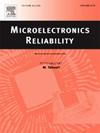Research on the lifetime model of IGBT modules based on coupling failure of bonding wire and solder layer
IF 1.9
4区 工程技术
Q3 ENGINEERING, ELECTRICAL & ELECTRONIC
引用次数: 0
Abstract
To address the issues of insulated gate bipolar transistor module failure and lifetime prediction, a physical model of the insulated gate bipolar transistor module has been established. Through thermo-electrical structural coupling simulations, the failure mechanisms of the bonding wire and solder layer have been analyzed. Based on the failure mechanisms of both components, a lifetime model for insulated gate bipolar transistor modules, considering the coupling failures of the bonding wire and solder layer, has been constructed. Additionally, the failure model has been fitted using data from power cycling tests, and a comparative analysis has been conducted between the parallel failure lifetime model and the energy-based lifetime model and Coffin-Manson lifetime model in terms of prediction accuracy. The results indicate that the insulated gate bipolar transistor module lifetime model based on parallel failures of the bonding wire and solder layer has an average error of less than 5 %, reducing the error by 7.74 % compared to the classical lifetime model. Furthermore, it shows a 59.38 % reduction in error compared to the energy-based lifetime model that considers only solder layer failure, significantly improving prediction accuracy. The development of the model and its results provide important reference significance for the reliability assessment of insulated gate bipolar transistor modules.
基于焊线与焊层耦合失效的IGBT模块寿命模型研究
为了解决绝缘栅双极晶体管模块失效和寿命预测问题,建立了绝缘栅双极晶体管模块的物理模型。通过热电结构耦合仿真,分析了焊线和焊层的失效机理。基于这两种器件的失效机理,建立了考虑键合线和焊层耦合失效的绝缘栅双极晶体管模块寿命模型。利用动力循环试验数据拟合了失效模型,并将并联失效寿命模型与基于能量的寿命模型和Coffin-Manson寿命模型在预测精度方面进行了对比分析。结果表明,基于键合线和焊料层并行失效的绝缘栅双极晶体管模块寿命模型平均误差小于5%,比经典寿命模型误差减小7.74%。此外,与仅考虑焊料层失效的基于能量的寿命模型相比,该模型的误差降低了59.38%,显著提高了预测精度。该模型的建立及其结果对绝缘栅双极晶体管模块的可靠性评估具有重要的参考意义。
本文章由计算机程序翻译,如有差异,请以英文原文为准。
求助全文
约1分钟内获得全文
求助全文
来源期刊

Microelectronics Reliability
工程技术-工程:电子与电气
CiteScore
3.30
自引率
12.50%
发文量
342
审稿时长
68 days
期刊介绍:
Microelectronics Reliability, is dedicated to disseminating the latest research results and related information on the reliability of microelectronic devices, circuits and systems, from materials, process and manufacturing, to design, testing and operation. The coverage of the journal includes the following topics: measurement, understanding and analysis; evaluation and prediction; modelling and simulation; methodologies and mitigation. Papers which combine reliability with other important areas of microelectronics engineering, such as design, fabrication, integration, testing, and field operation will also be welcome, and practical papers reporting case studies in the field and specific application domains are particularly encouraged.
Most accepted papers will be published as Research Papers, describing significant advances and completed work. Papers reviewing important developing topics of general interest may be accepted for publication as Review Papers. Urgent communications of a more preliminary nature and short reports on completed practical work of current interest may be considered for publication as Research Notes. All contributions are subject to peer review by leading experts in the field.
 求助内容:
求助内容: 应助结果提醒方式:
应助结果提醒方式:


